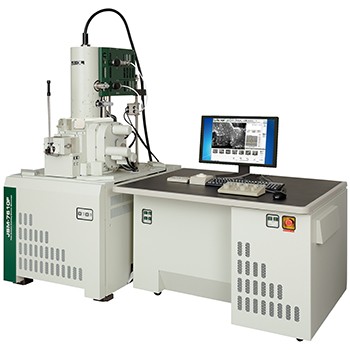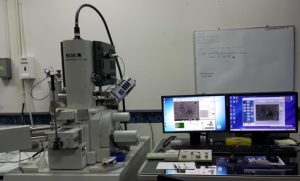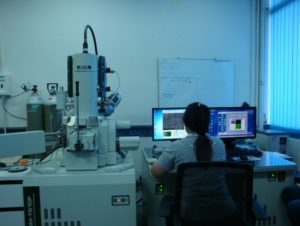กล้องจุลทรรศน์อิเล็กตรอนแบบส่องกราดชนิดฟิวอิมิชชั่นและอุปกรณ์วิเคราะห์ธาตุ
JEOL JSM-7610F, Oxford X-Max 20
The SEM is a microscope which uses electrons to illuminate a sample, instead of visible light used in optical microscope. When an electron beam strikes the sample, a variety of signals are generated. The three signals which mostly perform in SEM are secondary electrons, backscattered electrons and X-rays. Secondary electrons (SE) provide fine structure topographical feature of sample surface, backscattered electrons (BE) are used to discriminate areas of different atomic number elements and X-rays are used to identify the composition and measure the amount of elements in the sample. The SEM operates in high vacuum so the living samples, liquids and anything that contains liquids must be dried before observing. The SEM of model JSM-7610F is Schottky field emission gun which provide high resolution, 1.0 nm at 15 kV and 1.5 nm at 1 kV, and high magnification x25 to x1,000,000. There has two SE (upper and lower) and 1 BE detectors. The application mode, gentle beam (GB) can reduce the incident electron penetration and the beam damage to the sample. Additional EDS is equipped for qualitative and quantitative, mapping and line scan elemental analysis. EDS limitations: no detection of elements below B, X-ray detection limit 1,000 -2,000 ppm (0.1 – 0.2 %wt.) depending on the element and samples must be no fluids.

Staff

นางสาวบุณยาภรณ์ สระบัว
Bangon.W@chula.ac.th

นางสาวภัทรญา สระบัว
Piyathida.S@chula.ac.th

นายดนุ เจริญสุขพลอยผล
Danu.C@chula.ac.th

นางสาววิภาดา สิทธิวัง
Vipada.Si@chula.ac.th


